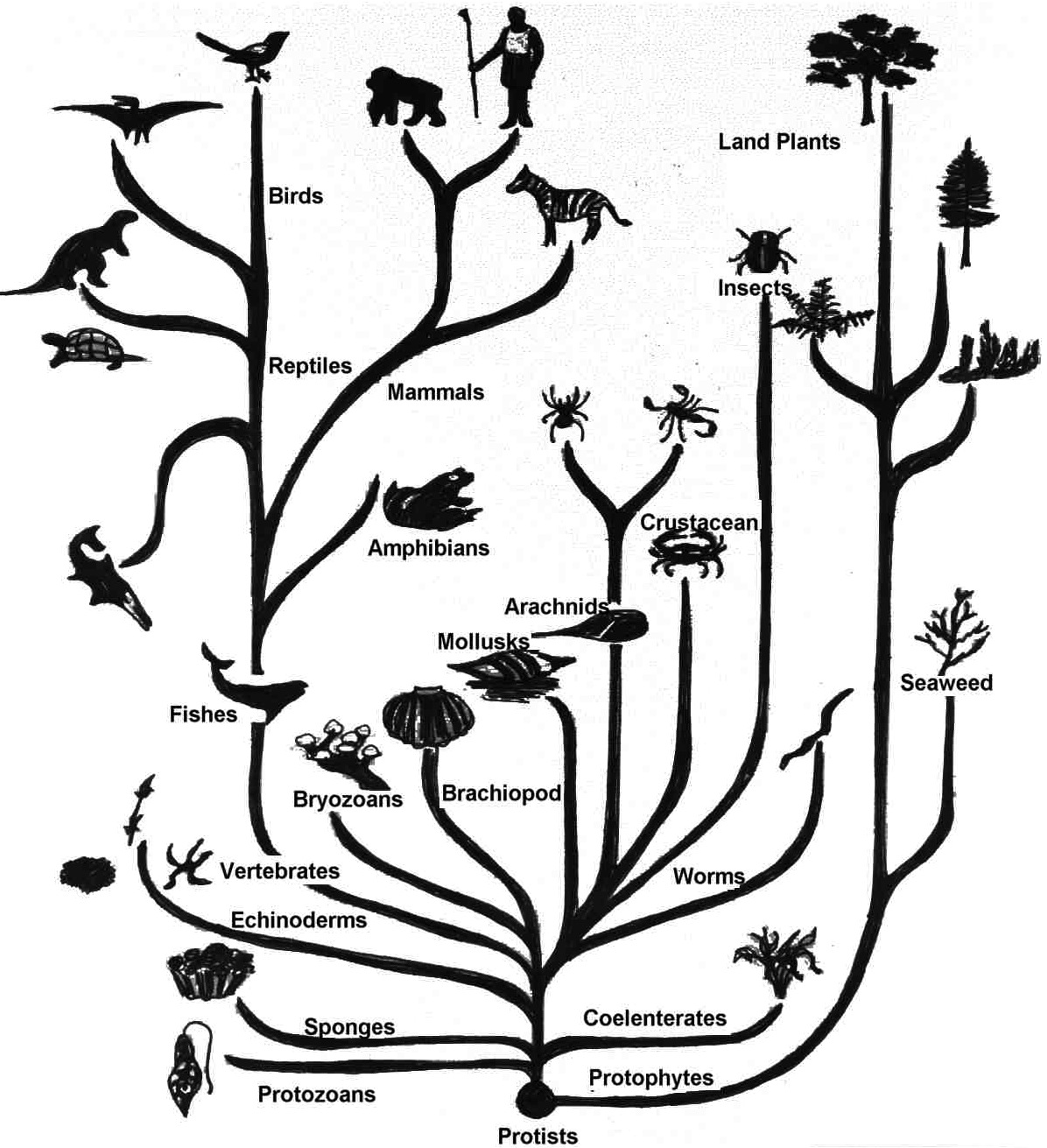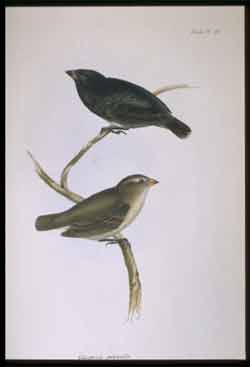
The inquiry reflected here is the concept of horizontal evolution -- that is the separation of an original (founder) species, due to isolation and adaptive radiation over time into distinctly separate species.
Some examples are:
| example | one | two |
| 1: flightless birds | Ostriches | Rheas |
| 2: wild cats | Lions | Tigers |
| 3: primates | old world monkeys | new world monkeys |
| 4: chimpanzees | Bonobo | ordinary chimps |
Another way to put it (translate to clarify) is:

How are Indian elephants different from African Elephants? The shape of their heads, ears and shoulders are recognizably distinct.
Why in nature do Lions and Tigers not breed together but in zoos under artificial selection we may cross them and develop "Ligers." Really that is true.
Islands and adaptive radiation

What is it that is unique about the Galapagos Islands that cued Darwin into his evolution/natural selection ideas?
Three things strike you upon seeing the Galapagos Islands,
1: is the faunal sparseness and the iguanas, birds and tortoises.
2: is the remoteness of the islands from one another and of the chain (archipelago) from the SA Continent.
3: is the volcanic substrate -- rough terrain -- and sparse vegetation.
Melville called the place demonic in appearance, inhabited
by a strange (different) collection of species than even on other island
groups (archipelagos) that whaling fleets and naturalists had frequented
on their long voyages.
The uniqueness of the islands lies in
Is it that they are remote and isolated from each other or the mainland?
Yes, the tortoise shells on one island bear strikingly
different patterns from other islands.
The finches are different in that their beaks are
not all the same from one island to another.
John Gould remarked to Darwin in 1837 or so (see Mayr) that these were three different species of distinct Mocking birds from the separate Galapagos Islands and not mere "varieties of the same species.
Dogs for example are varieties of the same species
and are all descended from a common ancestor with wolves.
To what extent can species mix with each other?
Or does that depend on your definition of species?We debated in class whether evolution was a movement towards perfection, or merely just change, perfect or not.
No it depends on the kingdom you are looking at.For example,
Animals: Usually speaking when two different species are crossed (horses and donkeys you get a sterile breed of mules.Plants: Oak trees readily form hybrids between two different species 9this may not be natural in that we grow Oak trees closer together and in different mixes than they may occur in the wild.
Bacteria can acquire genes and pass pieces of genetic code from one organism to another and even certain species.
Does it cut off at the class, order, family, etc?
I do not know but believe it is dependent on the kingdom you are referring to.The order of primates can not exchange DNA to recombine in fertilized eggs and form even a sterile offspring.
Doesn't survival of the fittest mean that in animal competition,
the ones with the lousy beaks (or claws) will not grab the food,
will die before they can reproduce, therefore the ones with the better
beaks will over time be the only ones passing on their traits?
So how could less suited (i.e. less perfect) animals possibly contribute to evolution?
Will wildlife adapt and biological diversity thrive with climate change?